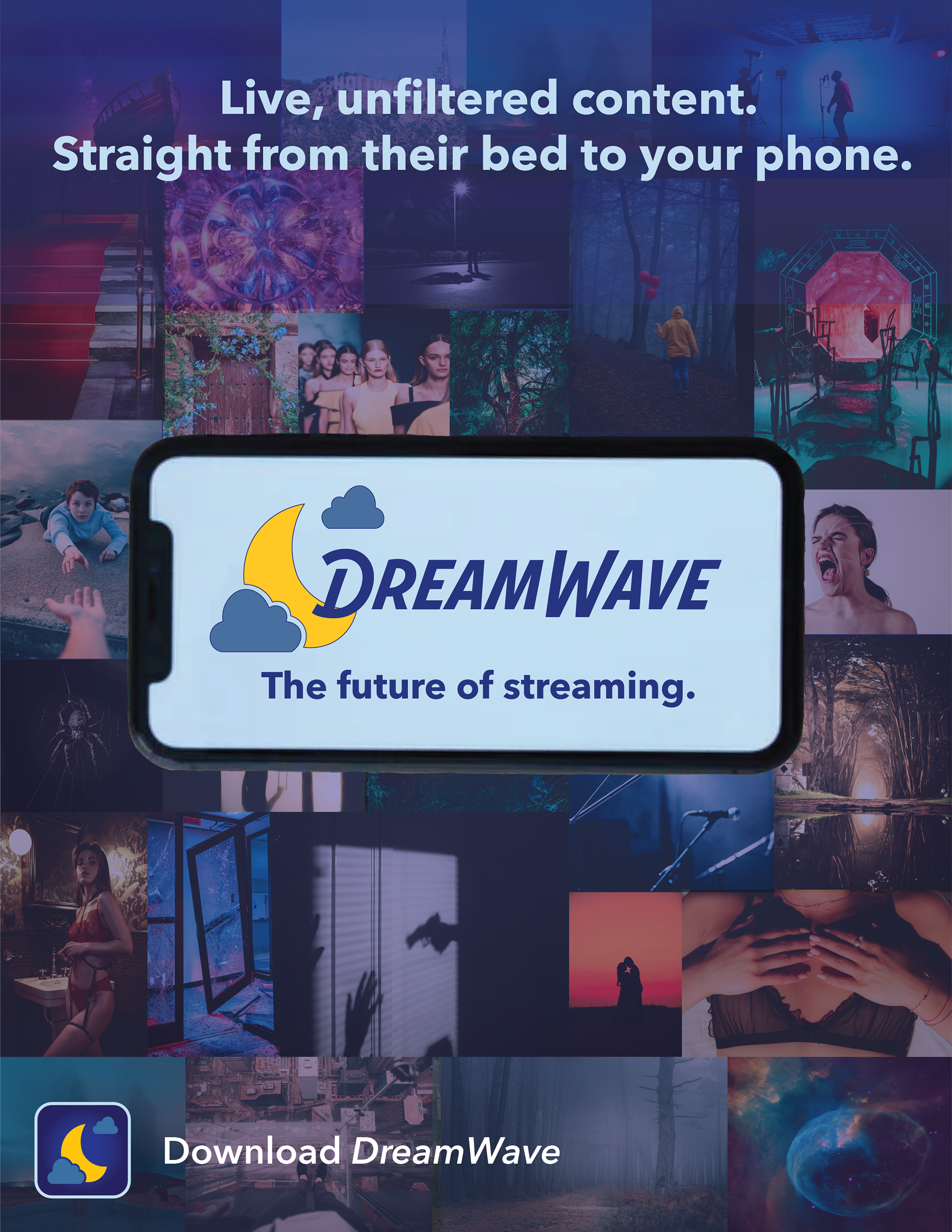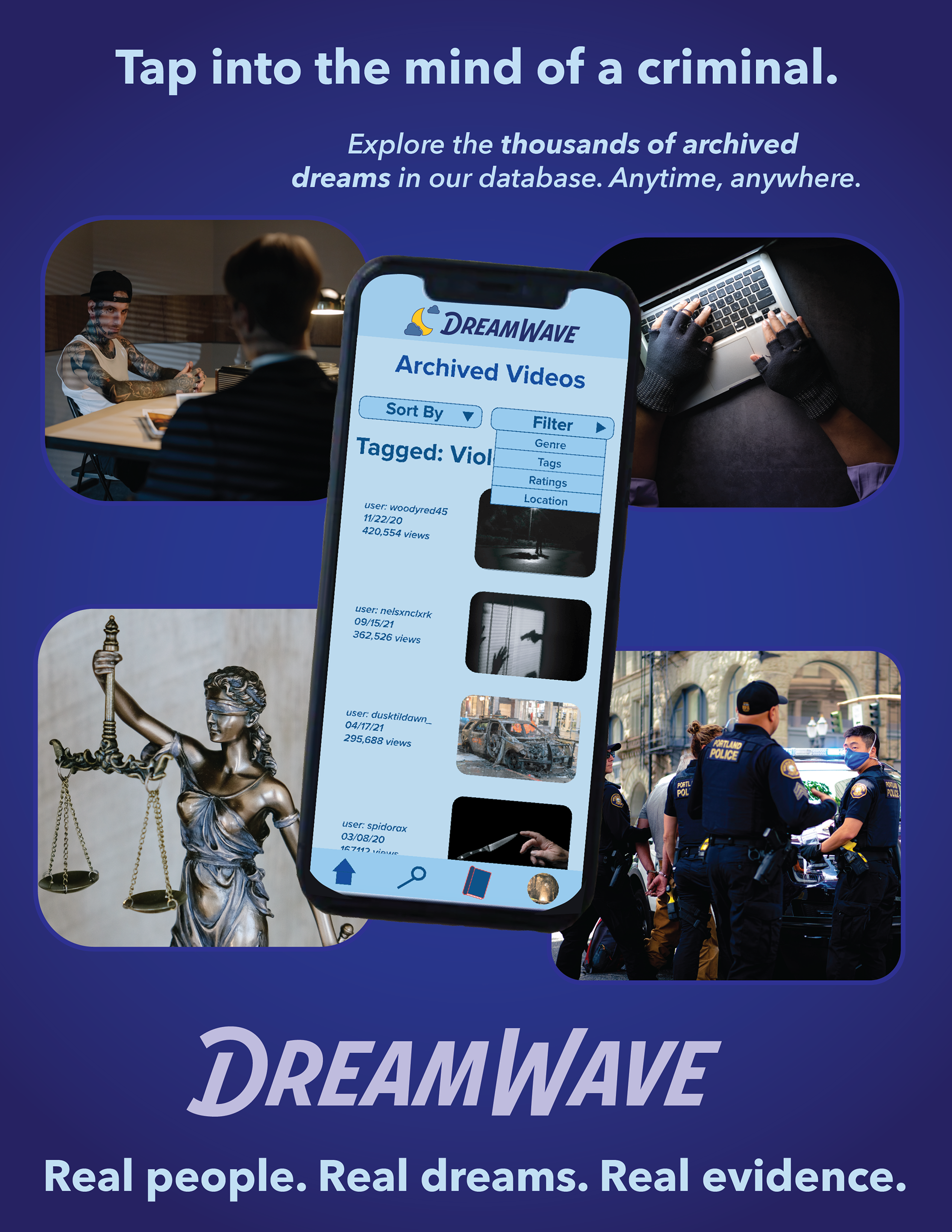DreamWave exploits the idea that social media users are willing to give up their right to privacy in the quest for success and micro-fame through a streaming service that allows users to watch a catalog of people’s live dreams from across the globe and a wirelessly connected electrode headband that allows them to seamlessly translate their brain waves while sleeping into visual dreams that would be broadcast to subscribers in real time. With my advertisements for the DreamWave app and headband, I aim to highlight the diversity and variety of user bases that this product could be marketed towards and the different implications that it could have on privacy, censorship, and law enforcement.



Social media sites have been heavily criticized in the past for promoting heavily edited and censored content, as well as contributing to users’ feelings of anxiety, depression, and self-absorption. Harassment and privacy concerns have also caused controversy for platforms like Instagram, Twitter, and Facebook, accusing them of collecting user data and personal information to sell to advertisers and other third parties. This was my inspiration for DreamWave, as I wanted to play up these values to the extreme and put them at the forefront of my product rather than try to hide or cover them up. I also was inspired by OnlyFans, which lets users buy a paid subscription to see creators’ explicit content, which is subject to less censorship than traditional social media sites.
I used this project to get the audience to make the connection that these same values are present in social media today, but instead of being highlighted and emphasized by platforms, they are intentionally hidden from public knowledge. If the audience is uncomfortable with the concept of DreamWave, then they should also be uncomfortable with present-day social media.
Ultimately, my goals for this project were to get people to think more critically about the way they consume social media, what rights and values they are giving up to use platforms like Instagram, Facebook, and YouTube, and whether they are comfortable with this tradeoff.


